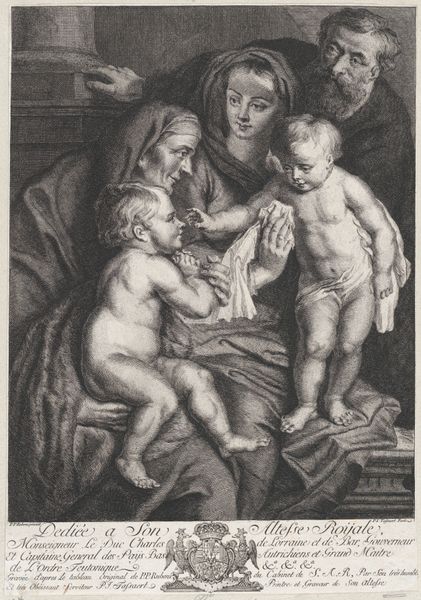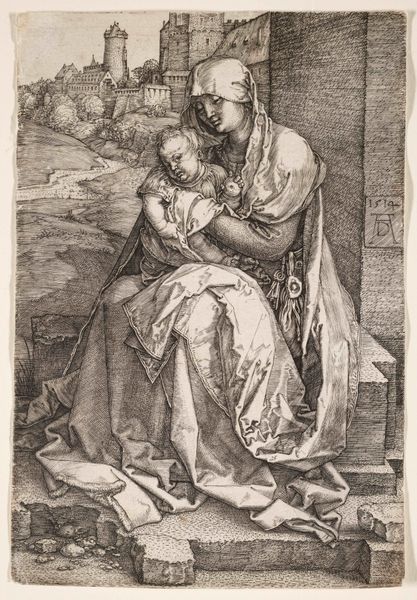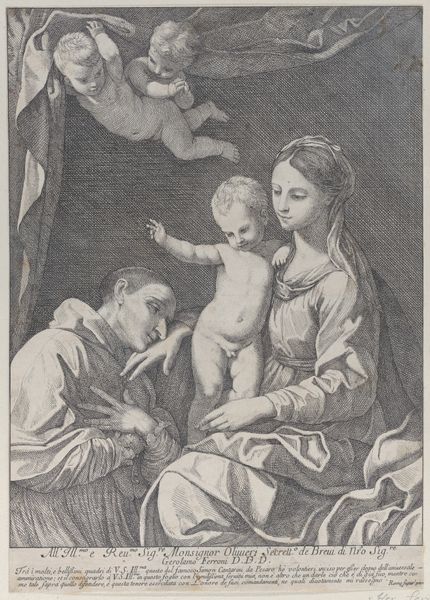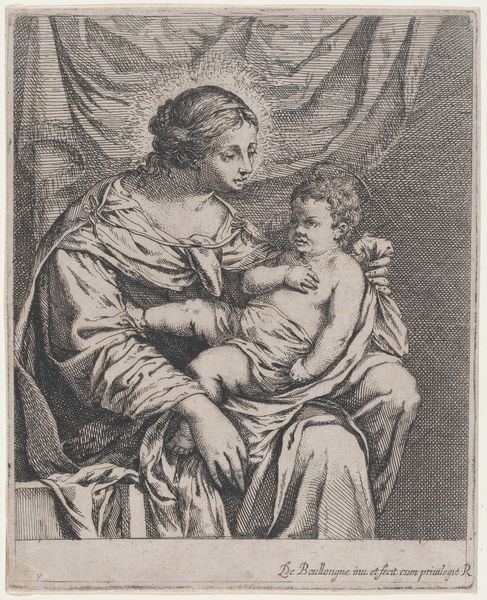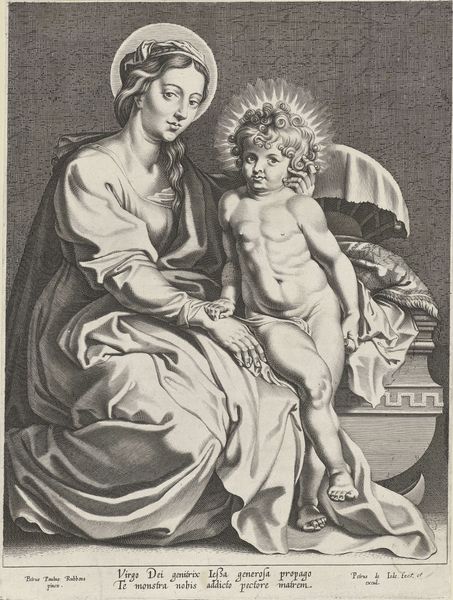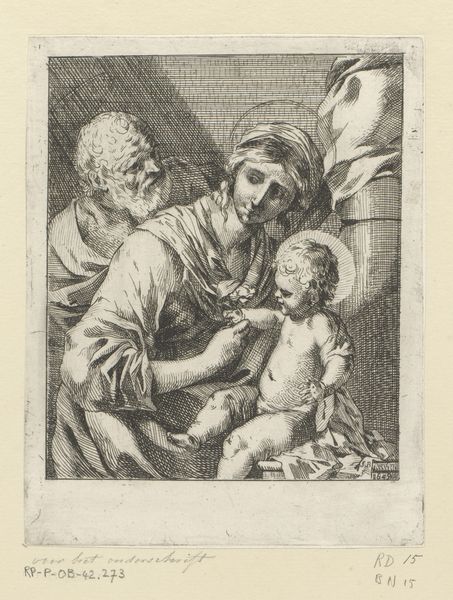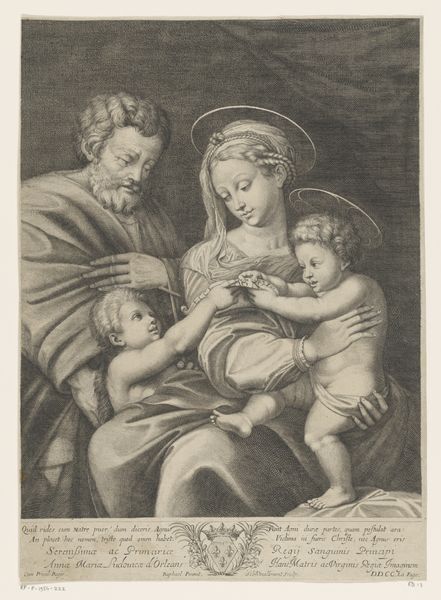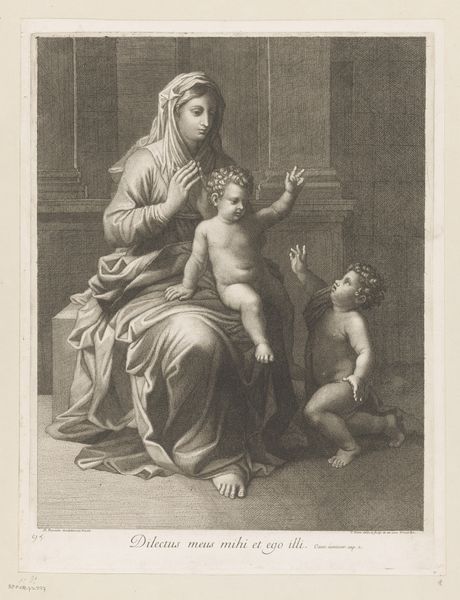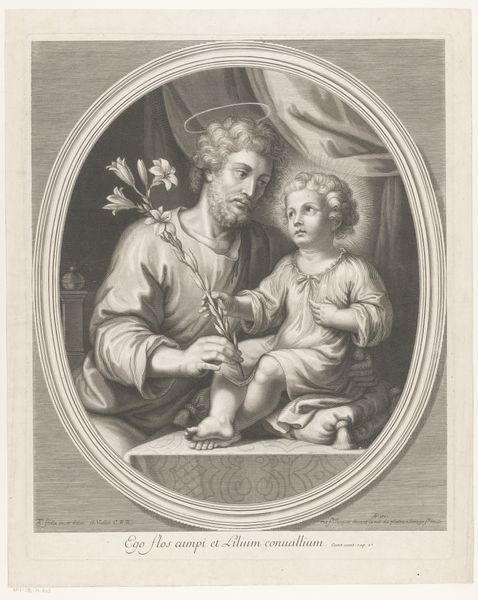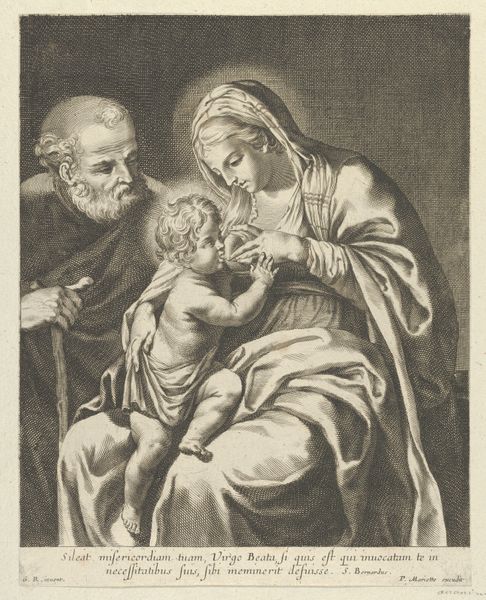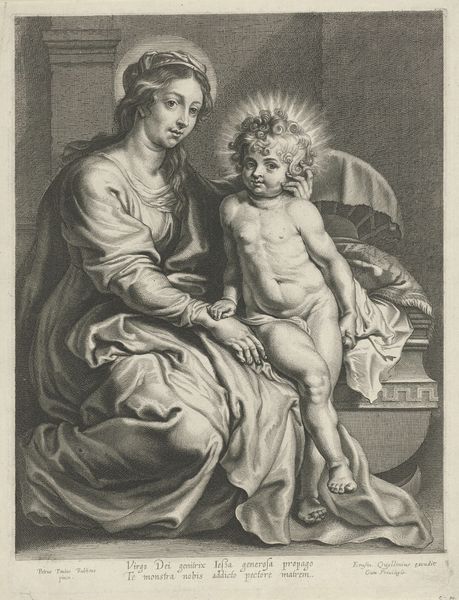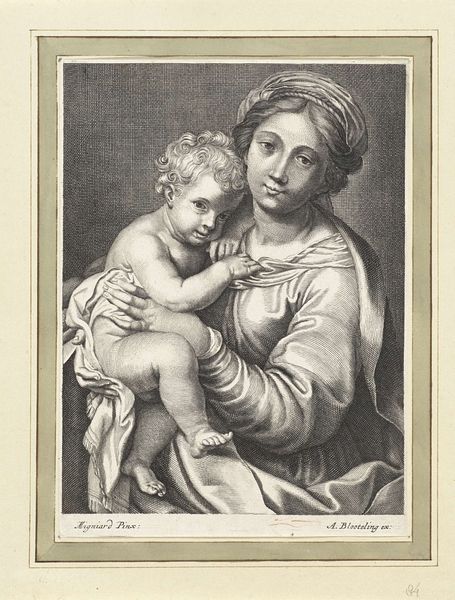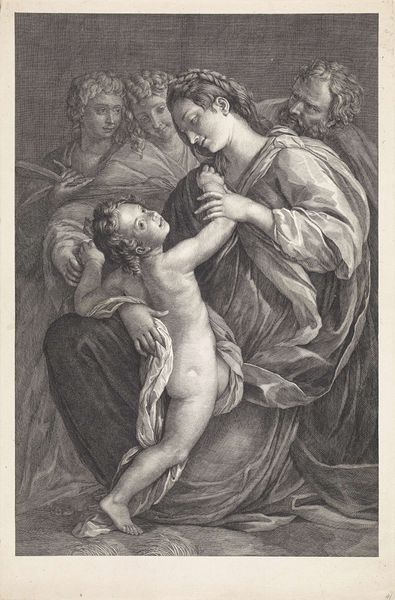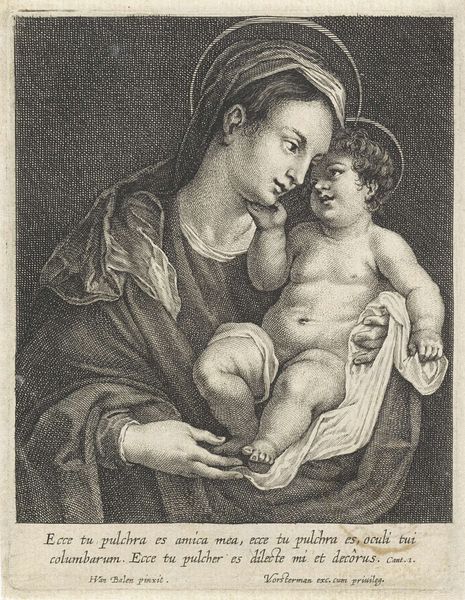
Virgin and Child, with the Christ child leaning against an orb 1628
0:00
0:00
drawing, print, engraving
#
portrait
#
drawing
#
baroque
# print
#
figuration
#
engraving
Dimensions: Sheet (Trimmed): 11 1/4 × 7 7/8 in. (28.5 × 20 cm)
Copyright: Public Domain
Curator: Here we have "Virgin and Child, with the Christ child leaning against an orb," a 1628 engraving by Lucas Vorsterman I, currently residing at the Metropolitan Museum of Art. Editor: It’s a tender scene, isn’t it? The stark contrasts of the engraving emphasize a softness in the Virgin's gaze and the child’s pose, while the sphere gives a curious grounding effect. Curator: The Virgin and Child as an iconographic theme reflects deep-seated cultural needs. This engraving emerges from a very specific time of great transformation, and anxieties within the Christian world as religious norms began to change. We have to read the construction of gender within the depiction to further assess it's original goals and current relevance. Editor: Agreed, there’s also a masterful interplay of light and shadow, that’s inherent to the medium of engraving. Vorsterman I used his tools skillfully to suggest three-dimensionality. It’s a real testament to his technical prowess to depict the varying textures of skin and cloth through lines alone. It’s like looking at a very well structured theorem that results in the viewer's interpretation of humanity. Curator: It can also be seen as the depiction of early societal views on women being viewed as delicate compared to male figures. With its fine lines and soft textures, it subtly reproduces existing ideals, as its focus on an all male God can suggest that Vorsterman was catering to existing political bias in the artworld. Editor: Interesting how those sharp contrasts accentuate not just form, but also an emotional weight, what do you feel when you perceive this work? Is it the vulnerability of the human body? Curator: It's true that vulnerability and humanism come to mind. And it's that emotional accessibility that grants this baroque piece its continued resonance. What might have been merely religious propaganda in 1628 becomes something far more universal across temporal and cultural divides. Editor: Agreed, it’s a deceptively simple composition. Every visual element carries its weight, balancing beauty with meaning.
Comments
No comments
Be the first to comment and join the conversation on the ultimate creative platform.
